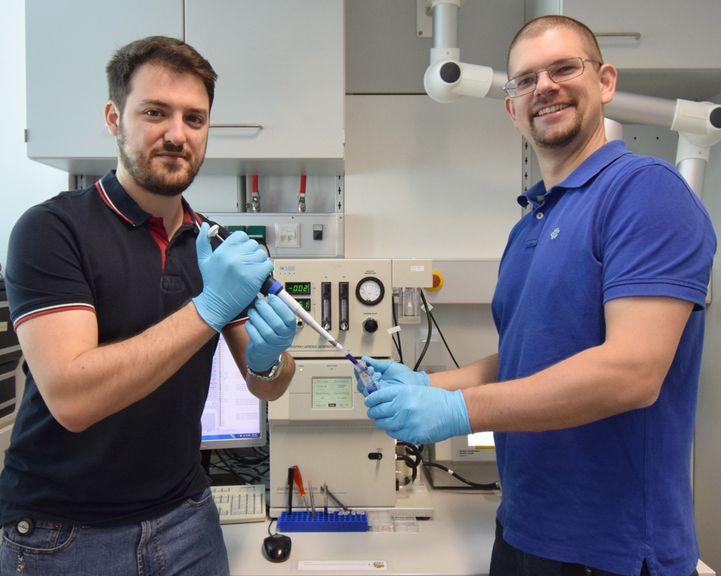
Virus-like particles are very important in medicine and are used for vaccinations, amongst other things. Yet it is technically very difficult to accurately characterize and identify them. Victor Weiss, from the Institute of Chemical Technologies and Analytics at the Vienna University of Technology, accepted the challenge. The assistant professor adapted the gas-phase electrophoresis system at the Vienna University of Technology and discovered a remarkably precise correlation between diameter and mass.
Virus-like particles look like viruses yet do not contain any genetic information and cannot multiply or spread.
Common methods for characterizing virus-like particles are inefficient. For example, images from an electron microscope are useful, but only a small number of particles are possible. However, from a statistical point of view, we want to have enough information on thousands of particles.
Separating particles on the basis of mass and charge
Weiss wants to classify the virus-like particles by defining the mass. Since different bioparticles have different masses, they are easy to distinguish from each other. This approach would imply the use of mass spectrometry, whereby particles are separated according to mass and charge. However, this is hardly suitable for biological particles such as virus-like particles because they are heavier than simpler, smaller molecules. Weiss explains further that “the sample must be extremely pure, otherwise the signals of various particle types overlap each other to such an extent that it is no longer possible to draw any conclusions.”
Diameter as an additional parameter
This is why the research group involved with mass spectrometric bio and polymer analysis at the TU Vienna turned to another method: gas phase electrophoresis. This makes it possible to sort particles not only by mass and charge, but especially by diameter.
Virus-like particles are usually more or less round. Many of them have an icosahedron shape. The term icosahedron comes from Ancient Greek and means ‘twenty-fold’. It refers to highly symmetrical entities whose corners, edges and surfaces are similar to each other.
Because of their shape, the molecular weight of the particles can be accurately determined by measuring the diameter. In order to make this measurement possible, the team adapted the gas-phase electrophoresis system at the Vienna University of Technology and succeeded in discovering an exact relationship between diameter and mass. Weiss explains: “If we use our method to calculate the mass based on the diameter, we are only 1.5% below the theoretical values that were predicted for these particles. This is a remarkable degree of accuracy which makes identification of a virus-like particle very straightforward. Now the team hopes to put the method into practice on a permanent basis.
“Our method complements conventional mass spectrometry. The combination of both methods will enable us to obtain fast and reliable results in the future.” Victor Weiss.
Victor Weiss was awarded the Theodor Körner Förderpreis in 2017. This award aims to encourage scientists to continue and/or complete projects.
Original publication
Weiss, et al., Virus-like particle size and molecular weight/mass determination applying gas-phase electrophoresis (native nES GEMMA), Anal Bioanal Chem (2019) 411: 5951.
Also of interest:
Quantum Sensor for Measuring Light Particles
Quantum Physics for Precise Dating of Glacial Ice







